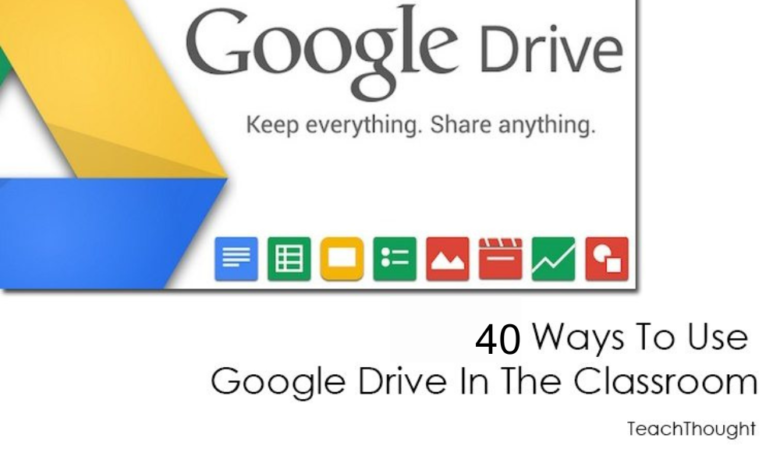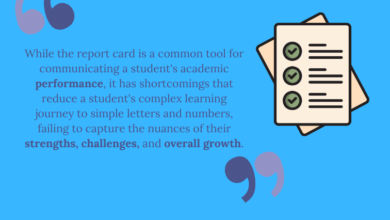
Google Drive released on April 24, 2012 and in the last decade+, some things have changed.
Students and educators have a wealth of learning and productivity tools available to them online.
Google offers some of the highest-quality resources on the web to meet all your study and teaching needs, and all you need to access them is an internet connection.
So in addition to the most common way–storing and organizing your own files–here are 39 more ways to get started using
Google Drive in Google Workspace for Education stores files in the cloud and manages access by user identity. File ownership is tied to the creator or the school domain and can be transferred when needed. Permissions control whether collaborators can view, comment, or edit in real time. Drive maintains revision history for supported file types and allows restoring previous versions without creating duplicates. In education domains, admins manage sharing, retention, and access controls to protect student data under Google’s education data processing terms.
Level 1: Practical Starters
1. Replace email attachments with live Drive files
Share one link with the correct access level so everyone edits the same version. This removes version mismatch and speeds review.
2. Use comments instead of margin notes
Comments add a discussion layer inside the file. Students and teachers can reply, resolve, and keep feedback in context.
3. Share folders by unit or assignment
Organize by unit names with assignment subfolders. Students always know where to find materials and where to submit work.
4. Suggesting mode for safe revision
Students propose edits without overwriting original text. Teachers can accept or reject changes one by one.
5. Templates for repeatable tasks
Create a master file for graphic organizers, lab reports, or reflections. Share as a copy link so each student starts with the same structure.
Practical Keyboard Shortcuts Teachers Actually Use
About 10–12 shortcuts cover most classroom workflows in Google Docs. On Mac use ⌘ in place of Ctrl.
Essential (daily or weekly)
Ctrl + Alt + MInsert commentCtrl + Shift + VPaste without formattingCtrl + /Show all shortcutsCtrl + KInsert linkCtrl + ZUndoCtrl + YRedo
High-value (regular use)
Ctrl + Shift + CWord countCtrl + BBold,Ctrl + IItalic,Ctrl + UUnderlineCtrl + EnterPage breakCtrl + FFindCtrl + HFind and replaceCtrl + Shift + >Increase text size,Ctrl + Shift + <Decrease text size
Classroom move: During peer review, require one clarifying question and one suggestion in comments before resolving a thread.
Level 2: Teaching Upgrades
1. Structured peer review
Assign comment roles such as clarity, evidence, or organization. Suggesting mode turns feedback into visible revision steps.
2. Collaborative notes and annotation
Create a shared document for live note taking during reading or discussion. Students co-build meaning rather than working in isolation.
3. Portfolios with version history
Capture early drafts and final drafts in the same file. Use version history to show growth and to reflect on changes.
4. Audio or video feedback via Drive links
Record brief responses and link them in comments or at the top of the file. This speeds response time and adds tone and nuance.
5. Differentiated assignment paths
Start with one base template, then duplicate and adjust scaffolds by need. Distribute the correct version to each student group.
6. Class resource libraries
Students curate topic folders with consistent naming. This creates a searchable, student-built knowledge base.
Classroom move: Require one question and one suggestion before a comment can be resolved. This keeps feedback dialog active.
Level 3: Creative and High-Leverage Uses
1. Hyperdocs for choice-based learning
Use links to create non-linear paths with prompts and resources. Students choose routes while staying inside a single document.
2. Multimedia learning notebooks
Combine text, images, charts, and brief audio reflections in one file. The notebook becomes a living record of thinking across a unit.
3. Slides as storyboards and drafting spaces
Use Slides to plan sequences, map arguments, or prototype media. Treat slides as a studio rather than only a final presentation.
4. Research hubs inside Drive
Store source excerpts, notes, and citations in shared folders. Keep research close to drafting to reduce context switching.
5. Student-created knowledge archives
Build glossaries, exemplars, and checklists that persist for future classes. This extends audience and purpose.
6. Choice portfolios with captions
Students select artifacts and add brief captions that explain growth. Use comments or file descriptions to keep context with the work.
Classroom move: Ask learners to submit a single Drive folder link for a project. The folder becomes evidence of process and growth.
Efficiency Layer: Workflow Boosters
- Add shortcut to Drive to avoid duplicates and preserve shared access.
- Star active files for quick access during a unit.
- Naming conventions such as
unit-topic-lastnamespeed search and sorting. - Turn a sharing link into a copy link by replacing
/editwith/copyfor instant templates. - After deadlines, limit access to view or comment to control late edits.
Data Privacy and Administrative Controls
In Workspace for Education, admins manage sharing rules, retention, and user access in Drive. Access is authenticated by account identity and not by device. Files remain under the institution’s domain unless ownership is transferred. Revision history is available unless restricted by policy. Sharing can be limited to users in the domain to protect student data.
Classroom Application Snapshots
- Writing: Draft in Docs, revise in suggesting mode, and address targeted comments before final share.
- Project-based learning: Teams maintain a shared folder for planning, research, media, and reflections to show full process.
- Student reflection: Attach a short Drive audio or a brief Slides note describing one change that improved the draft.
- Research: Collect sources in Drive, highlight excerpts in context, and move directly into drafting with fewer tabs.
- Portfolio defense: Use version history to explain how evidence and reasoning improved between drafts.
Optional Next Step
If you want ready-to-use materials, request Drive templates for peer review, reflection, portfolios, and choiceboards.
Source link





